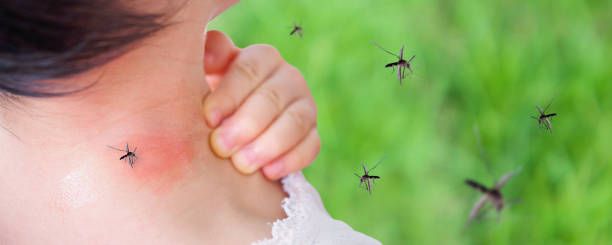The World Health Organization (WHO) recommends artemisinin-based combination therapies (ACTs) for treating malaria. There is a significant interaction between these treatments and malnutrition, specifically, wasting and stunting, in children under 5 years old. This interaction adversely affects the outcomes of treating uncomplicated falciparum malaria with ACTs in this age group. Specifically, children under 5 who suffer from acute malnutrition and have symptoms of uncomplicated falciparum malaria are more likely to experience delayed parasite clearance, ACT treatment failure, and recurrent infections.
The analysis revealed that a decrease in the WHZ was associated with an increased risk of three adverse outcomes: positivity on day 2 (adjusted odds ratio (AOR) 1.12, 95% confidence interval (CI) 1.05–1.18, p=0.0002), treatment failure (adjusted hazard ratio (AHR) 1.14, 95% CI 1.02–1.26, p=0.016), and reinfection after treatment (AHR 1.09, 95% CI 1.04–1.13, p=0.0003). Additionally, children who were less severely wasted (WHZ between –2 and –1) were more likely to experience recrudescence (AHR 1.85, 95% CI 1.29–2.65, p=0.0008) compared to those with a WHZ of ≥0.
“Children with wasting can have weakened immunity and are at a substantially increased risk of death from infectious diseases, including malaria,” according to investigators. “Severely wasted children with malaria have fewer classic clinical signs of the disease than non-malnourished children and often present with no fever or with hypothermia, delaying diagnosis and treatment.”
3 Key Takeaways
- Children under 5 who are experiencing acute malnutrition, characterized by wasting (low weight-for-height Z score), have significantly worse outcomes when treated for uncomplicated falciparum malaria with ACTs.
- The altered pharmacokinetic properties of ACTs in malnourished children, particularly those with wasting, can lead to reduced exposure to the drugs.
- Diminished drug exposure is linked to delayed parasite clearance and an increased risk of treatment failure and duration of post-treatment prophylaxis.
Researchers examined the link between malnutrition, in both its acute (wasting) and chronic (stunting) forms, and the day 42 PCR-adjusted risk of recrudescence (the return of the same infection) or reinfection following treatment, using Cox regression analysis. Furthermore, they explored the connection with day 2 parasite positivity by employing logistic regression.
Data was collected from 36 targeted studies, with 31 conducted in Africa. These studies encompassed 75 locations and involved 11,301 children who were eligible for the research. Among these children, 11.5% were found to be wasting (defined as having a weight-for-height Z score (WHZ) less than –2), while 31.8% were stunted (defined as having a height-for-age Z score (HAZ) less than –2).
“The increased risk of treatment failure in wasted young children might also be attributable to altered pharmacokinetic properties of the artemisinin derivative or the ACT partner drug,” according to the investigators. “Reduced exposure to the artemisinin derivative might be associated with delayed parasite clearance (detectable parasitaemia on day 2), while the risk of treatment failure and duration of post-treatment prophylaxis (risk of or time to reinfection) depends primarily on the longer-acting partner drugs.”
No significant relationship was found between stunting and the efficacy of ACT treatment, indicating that while wasting has a clear impact on the outcomes of malaria treatment, stunting does not seem to affect the treatment's effectiveness in the same way.
This meta-analysis faced limitations, including a sample of children, leading to an under-representation of cases. The absence of data and measurements of exposure hinders understanding of relationships and the possibility of optimizing treatment for children. Additionally, nearly half of the subjects received artemether-lumefantrine, limiting insights into the effects of other ACTs on children.
Overall, acute malnutrition can affect how medicines are absorbed and metabolized. There is an urgent need for additional research to guide the optimization of ACT dosages in malnourished children. Further research is necessary to explore the impact of wasting on outcomes and the roles of bioavailability and immunity.
Reference
1. WWARN ACT Malaria and Malnutrition Study Group. Does Acute Malnutrition in Young Children Increase the Risk of Treatment Failure Following Artisinin-Based Combination Therapy? A WWARN Individual Patient Data Meta-Analysis. The Lancet. Published April 2024. Accessed March 13, 2024. doi: https://doi.org/10.1016/S2214-109X(24)00003-2

